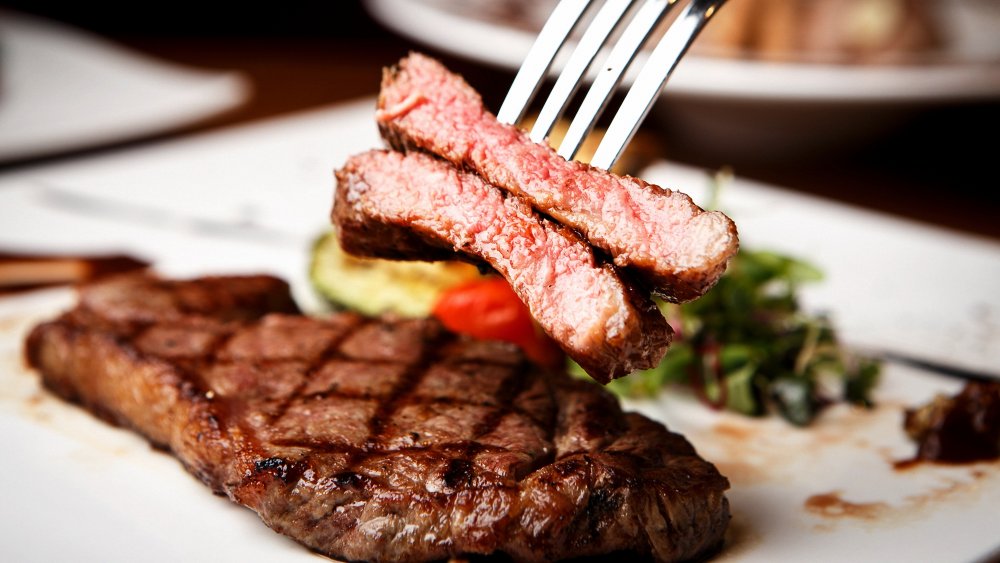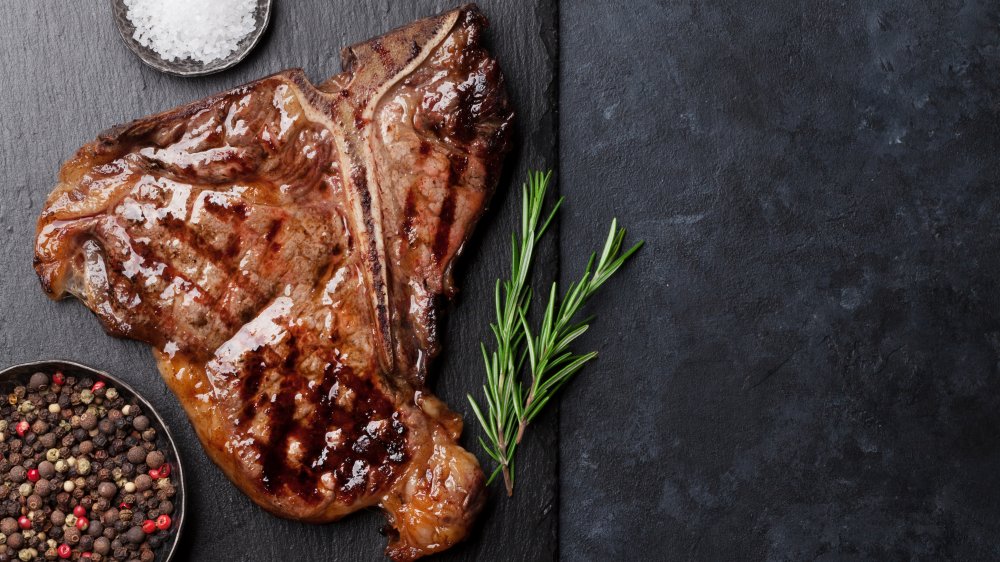The Reason Some Cuts Of Steak Shouldn't Be Eaten Rare
Cooking the perfect steak isn't easy — there are a lot of mistakes you can make. For a long time, the prevailing wisdom has been that the worst thing you can do to a cut of steak is to overcook it (via Napoleon), but it turns out that there are some cuts of steak that shouldn't be eaten rare.
Even if you're trying to eat less red meat, you still want to make sure that the steak you do still eat is cooked to perfection. And if you're cooking your skirt steak, ribeye, and filet mignon rare, well, you may be missing out on all they have to offer.
Why you should cook certain steaks past rare
The reason why some steaks need to be cooked past rare is because they're filled with fats and connective tissue (via Business Insider). If you undercook these cuts, they can be tough and the fat can be chewy. Cook them to medium-rare, medium, or even medium-well in some cases, on the other hand, and the heat will have cooked those fats and dissolved some of those connective tissues. The meat is now juicy and tender, and you're not sitting there chewing on fat for five minutes after you take a bite.
A clear visual giveaway that your meat may need to be cooked to medium or medium-well is the meat grain. If you can see the grain of the meat running down the length of the steak, chances are that cut needs to be cooked to medium or medium-well for the best results (via Epicurious). That will leave enough time for the connective tissues to relax and get tender.
There are some steaks, like flatiron, top sirloin, and paleron, that are lean and can be cooked rare. But other popular cuts like ribeye, New York strip, T-bone, tri-tip, flank steak, and filet mignon should be cooked to medium-rare, while skirt steak, chuck short rib, and chuck flap steak should be cooked to medium for the best flavor and texture.

